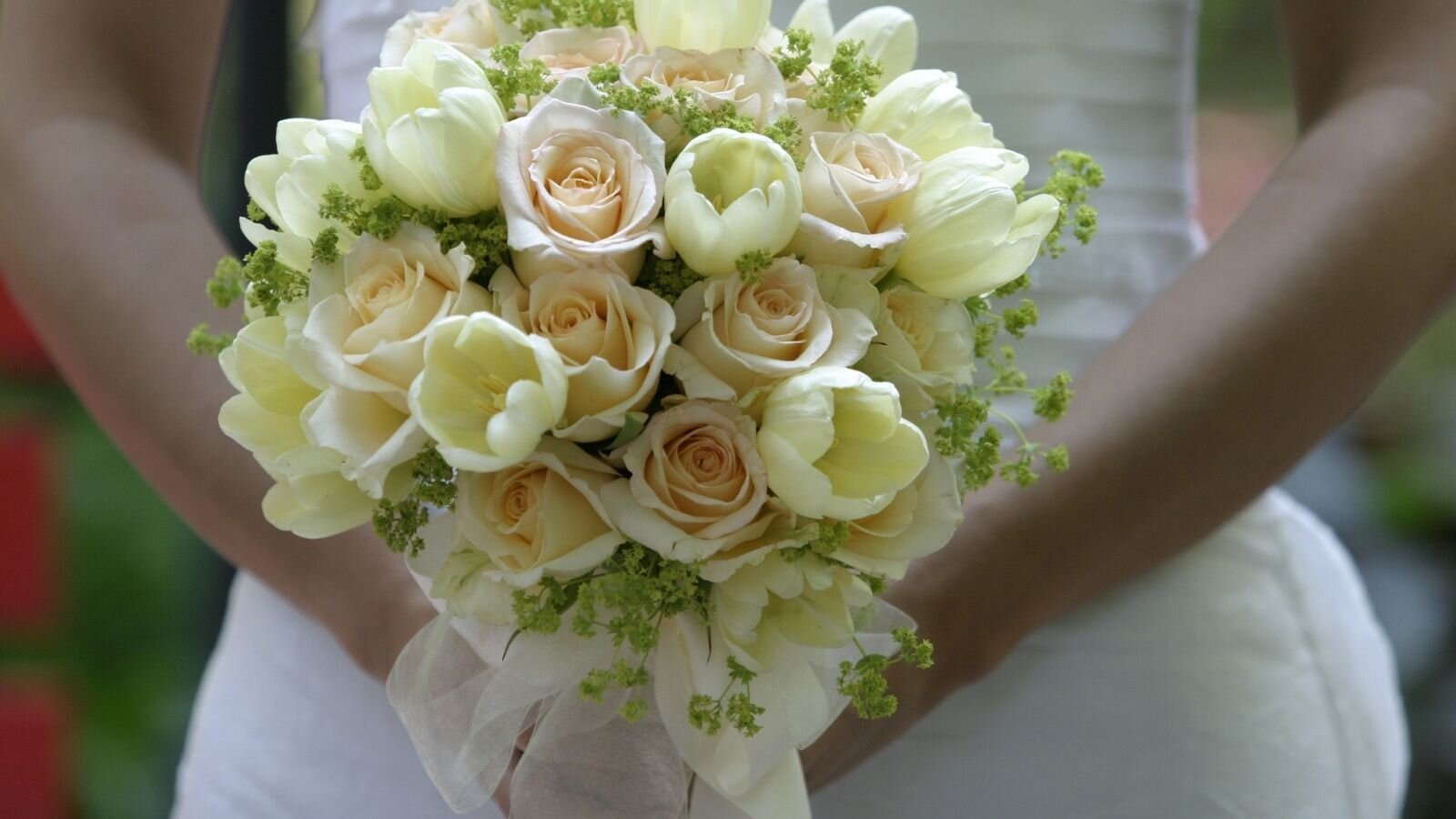Close your eyes and picture a wedding ceremony. Chances are good that a bride holding a bouquet is among the scenes that popped in your mind. One of the reasons that image is so enduring is because bridal bouquets, at least some form of them, date back to ancient times.
While this tradition, and the bouquets themselves, have evolved considerably over the centuries, they remain a treasured part of wedding ceremonies for many around the world.
Here’s a closer look at the traditions of carrying and tossing bridal bouquets, how they started, and how brides honor them today.
Pass the Salad Dressing
If you’d been a bride in ancient times, or even the Middle Ages, you probably would have carried a bouquet of sorts. You may have held an arrangement of delicate blooms. Flowers in ancient Rome, for example, symbolized new beginnings, fidelity, and fertility.
On the other hand, you may have opted for a lovely collection of herbs and spices with a few bunches of garlic thrown in for good measure. This practice, people then believed, helped repel evil spirits. And by the time the Bubonic Plague was spreading across England, the garlic and herbal bouquets were used to help ward off illness.
A Sensory Experience
Collections of flowers or pungent herb-and-garlic collections served another practical purpose, during the Middle Ages. With the invention of deodorants and antiperspirants still centuries away, aromatic bouquets may have helped cover up the bride’s body odor. But some historians dispute that idea.
“The idea that medieval people rarely bathed is a persistent but false one,” Melissa Snell wrote for ThoughtCo. “Most people washed on a regular basis. Going without washing was considered a penance even in the early Middle Ages.”
Winding Up for the Pitch
Whatever their purpose, bridal bouquets have played a significant role in wedding ceremonies for centuries. So why did it become a tradition to throw them?
Basically, lobbing bouquets at guests got its start as a strategy to give the bride a bit of peace. In medieval Europe, touching the bride was considered very good luck. That belief transformed guests and well-wishers into a less-than-considerate group, comparable to modern-day Black Friday shoppers lined up for a bargain, intent on grabbing their lucky charm (the bride).
“Guests would typically stand around her in an attempt to rip the gown off!” Alexa Erickson wrote for Reader’s Digest. “In order to deter guests, the bride began tossing their bouquets into the crowds to distract people, then making a break for it with her husband to the bridal chamber.”
Gradually, tossing the bouquet became a way for a bride to wish her single friends the same happiness she’s experiencing. Tradition says that the person who catches the bouquet will be the next to marry.
Brides these days have found a way to honor this practice without giving up an important wedding memento, Eddie Zaratsian, owner of Los Angeles wedding and event design firm, Eddie Zaratsian Lifestyle & Design, told Brides magazine.
“Most couples today will choose to keep the original bouquet as a keepsake, so we do receive requests to craft a (smaller) special arrangement that's designated specifically for tossing. Smaller bouquets also ensure that they can be caught with ease!”
Victoria’s Impact
Long before brides attempted to emulate what Princesses Diana, Kate Middleton, or Meghan Markle did on their wedding days, Queen Victoria was the trendsetter of her time. Not only is Victoria known for kicking off the practice of wearing a white wedding gown, but she also popularized the modern version of the bridal bouquet.
“Queen Victoria who, when marrying Prince Albert, carried a tussie-mussie, a tiny round clutch of flowers in a filigree holder filled with moss and orange blossoms,” Modern Wedding explained. “In Victorian times, lovers often sent different flowers as a way of expressing their love. Each flower had a different meaning, and their exchange soon became popular and was linked to romantic love. Flowers became a part of wedding ceremonies because of this romantic association.”
Around the Globe
Wedding flowers and bridal bouquets aren’t limited to European tradition. In China, for example, wedding flowers are used mostly as a decoration on tables at Chinese weddings, according to an article by Lauren Mack for ThoughtCo.
“Large bouquets of colorful flowers (typically pink and red) are often given to the bride and groom as gifts,” Mack wrote. “These elaborate bouquets usually line the hall leading to the wedding reception. Some brides opt to carry a small bouquet though this is usually just for wedding photos.”
Bouquets can play a particularly important role in Mexican weddings, according to a blog by Bride & Blossom.
“The bride will sometimes carry two bouquets – one for herself, and one to honor the Virgin Mary, which will be left as an offering in the church after the ceremony,” Bride & Blossom explained. “The bride’s madrina de ramo is a girl chosen to carry her second bouquet prior to the ceremony.”


